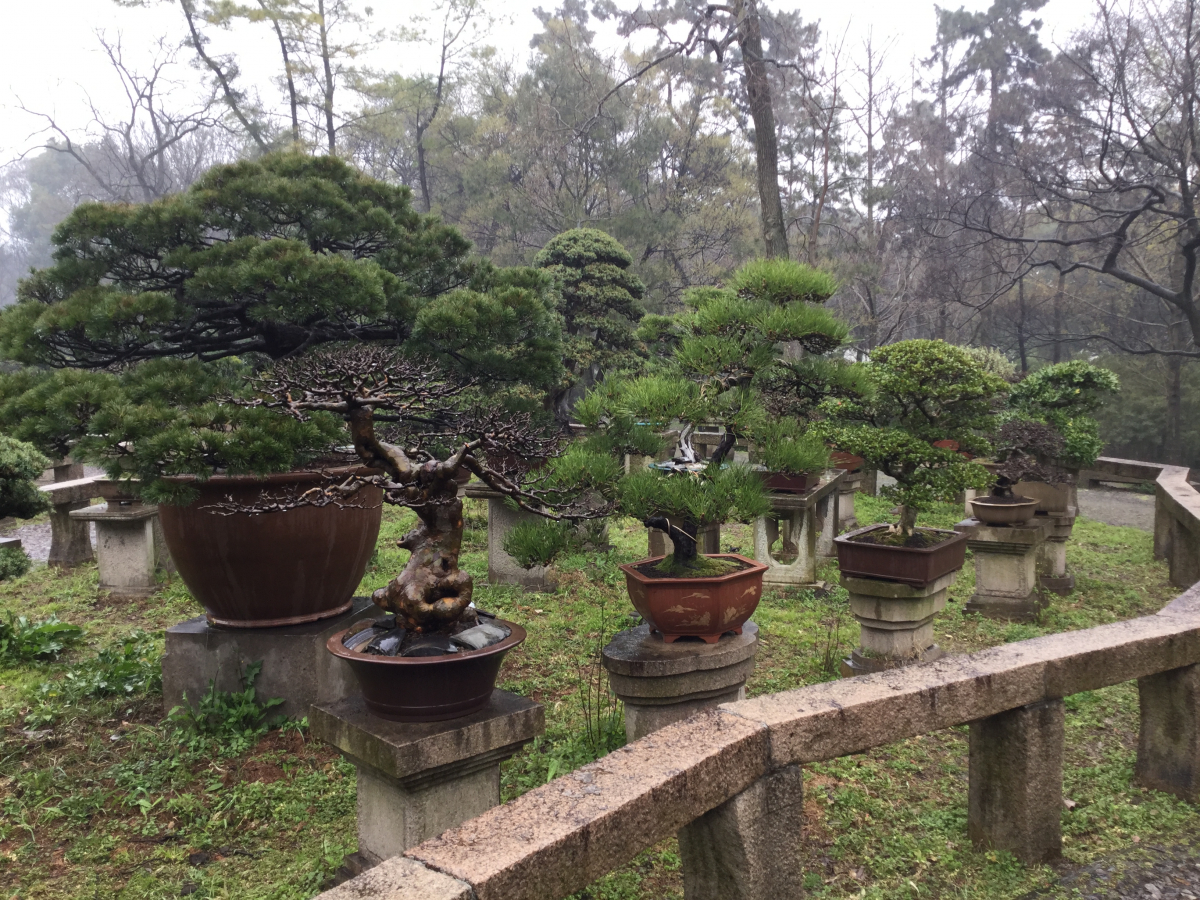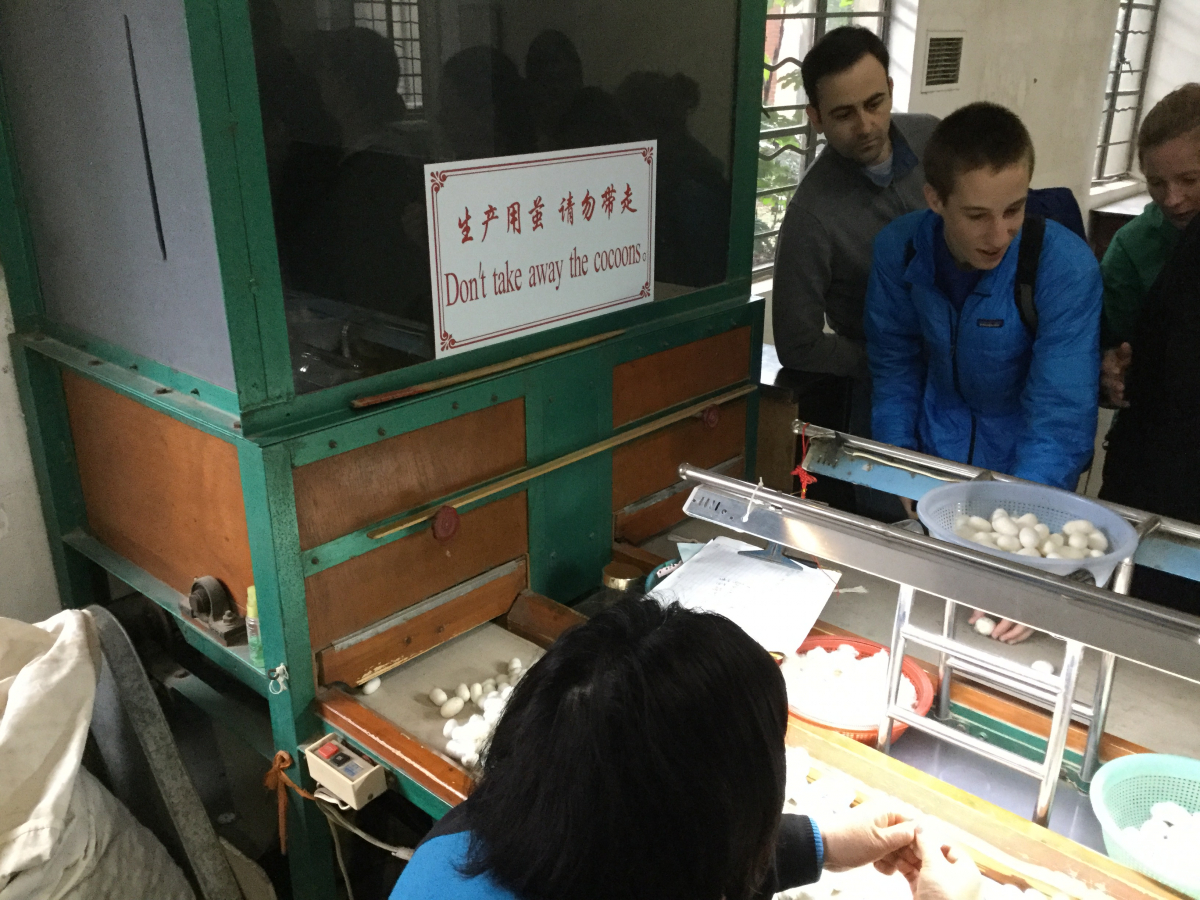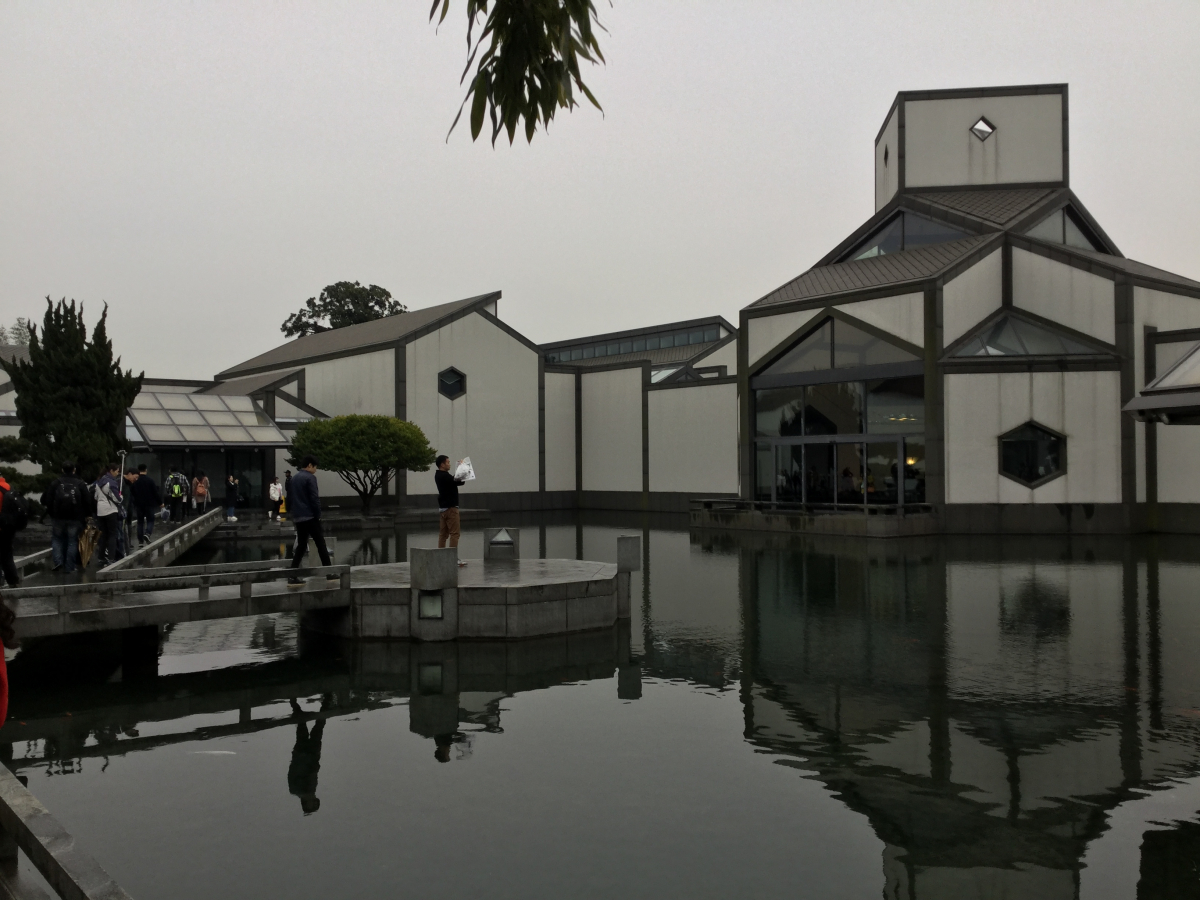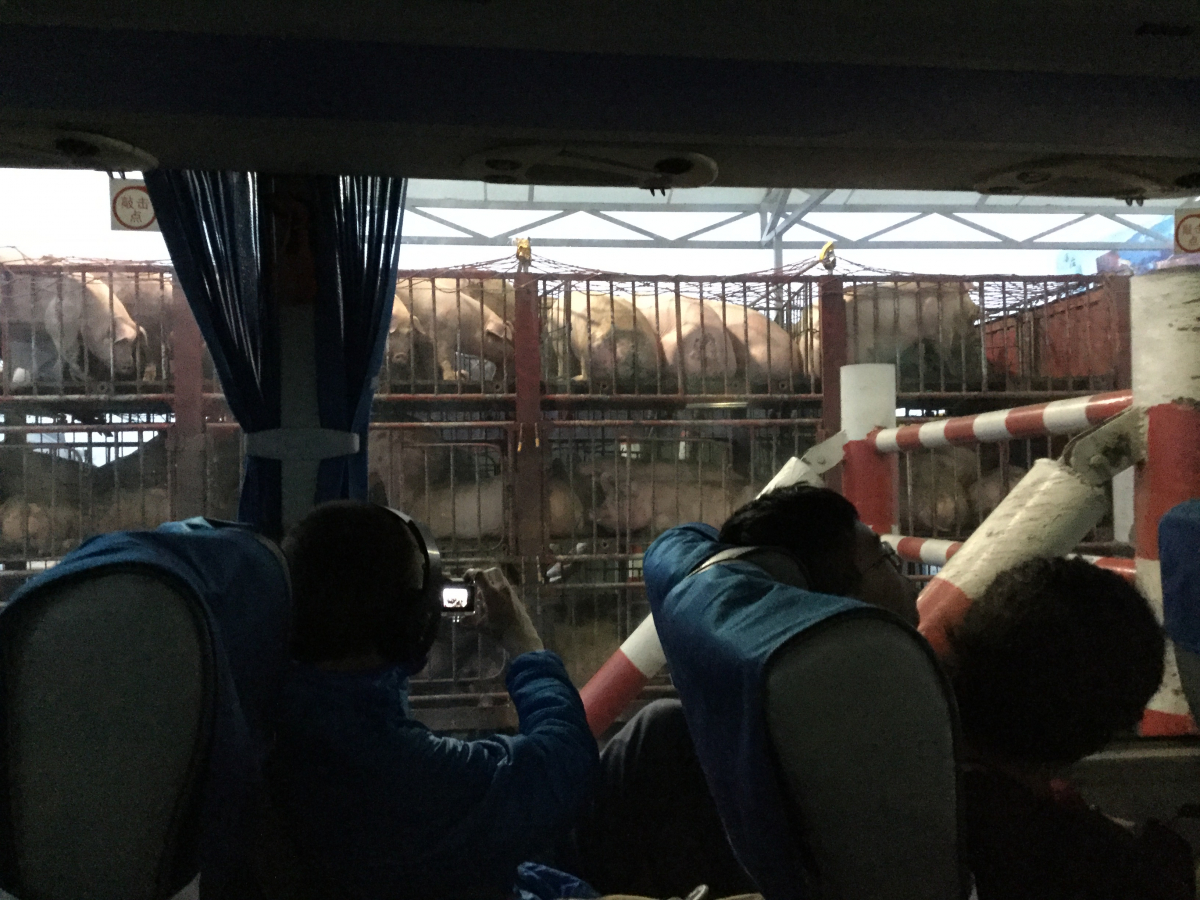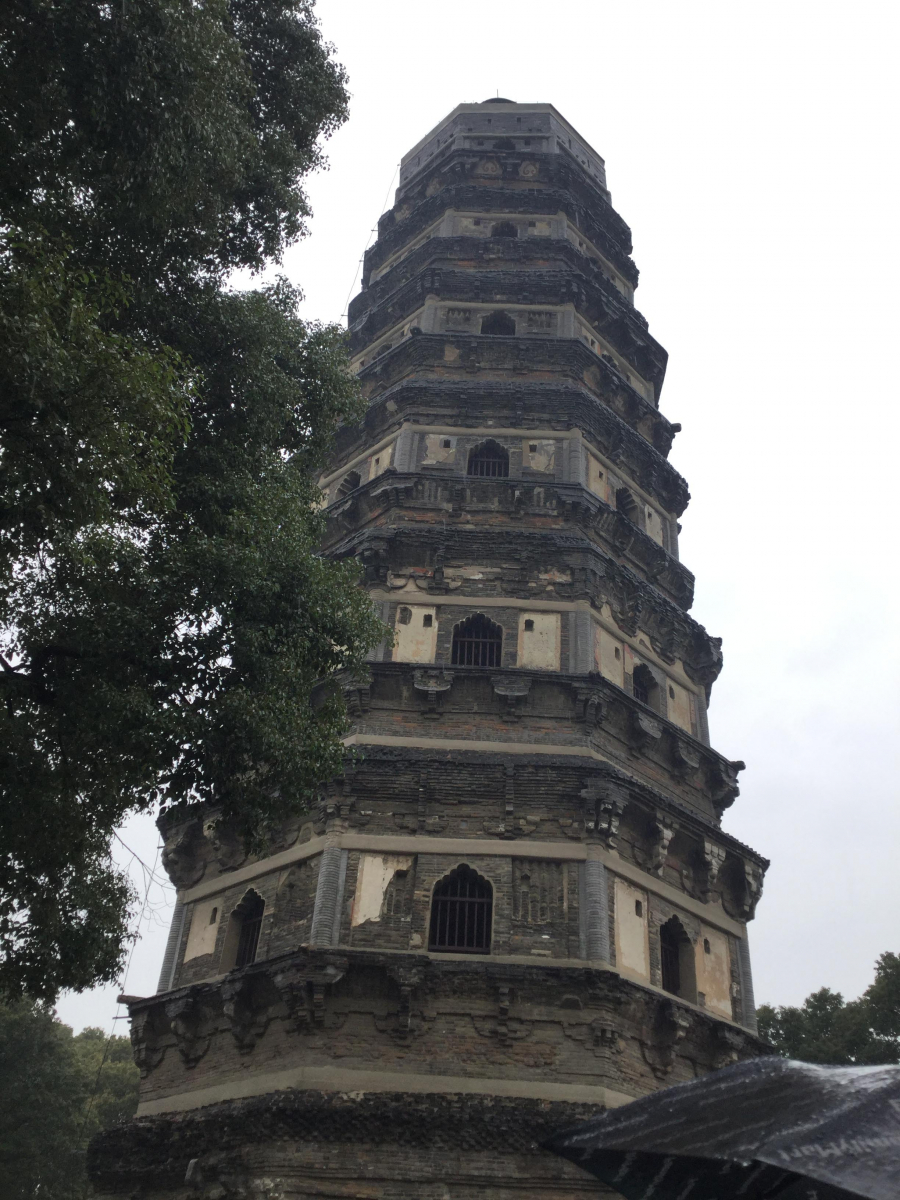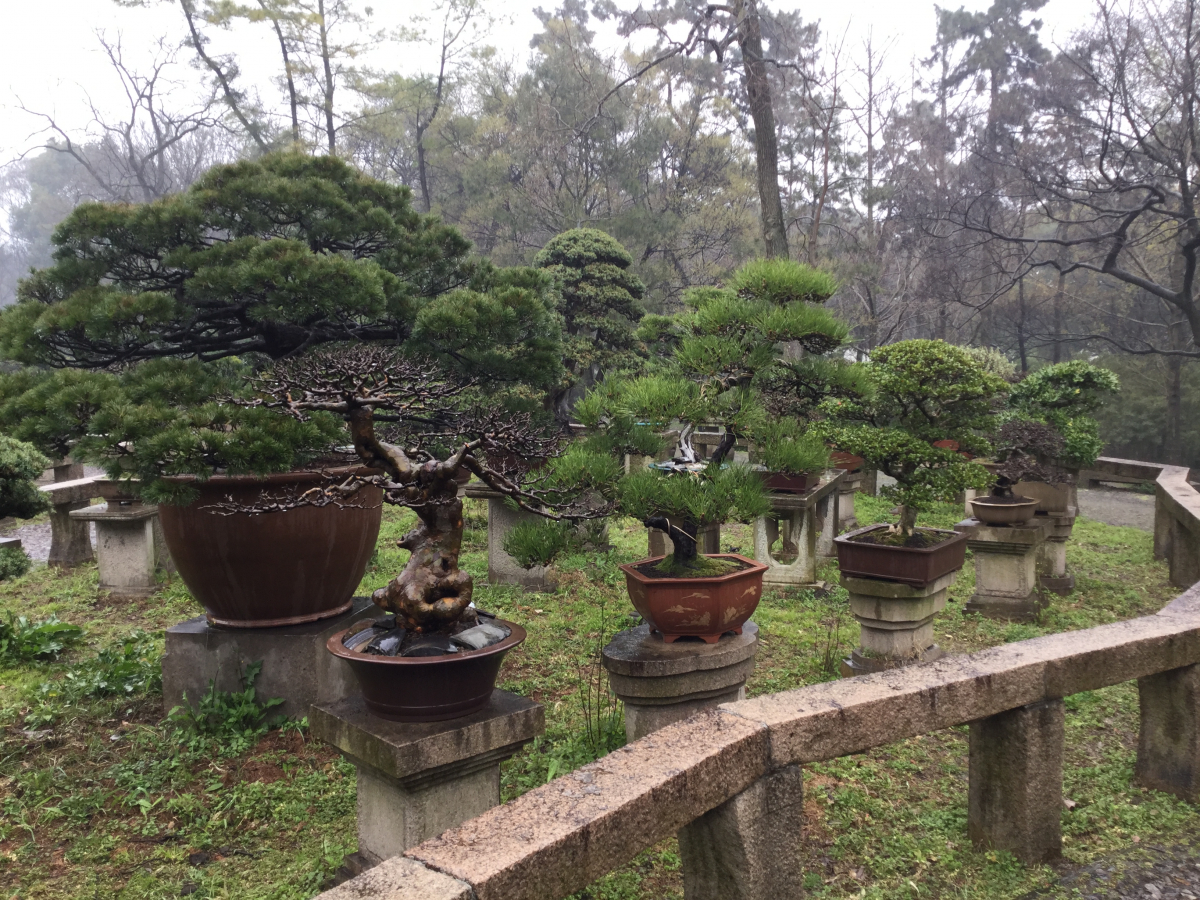
It was a very rainy day today, but this in no way dampened our spirits as we explored the canal city of Suzhou. As we drove into the outskirts we were greeted by a sky scraper technically called the Oriental Gate, but what locals call the “Pants Building.” Shanghai may be one of China’s number 1 cities today, but only 150 or so years ago, Shanghai was just a small village of rice paddies and Suzhou was number 1! Our first stop was Tiger Hill. An old king is buried in the hill somewhere, but these days the hill is famous for its garden of 500 bonsai trees and leaning pagoda (a la Pisa). We took a tour of the garden and met with a bonsai master who not only showed us how to shape the bonsai, but allowed a couple people to try it themselves! The bonsai he was working on is 100 years old, but not as old as Middlesex! Many other trees in the garden were hundreds of years old. After a trip to the top of the hill to view the leaning pagoda, we made our way down and back to the bus for the next stop. Only after we started driving away did we discover that Kelly Marchand had stayed behind to meditate among thr bonsai! The bus driver quickly pulled over and our guide rushed back to the hill to track her down. After some minutes of suspense, she was located and we continued on our way.
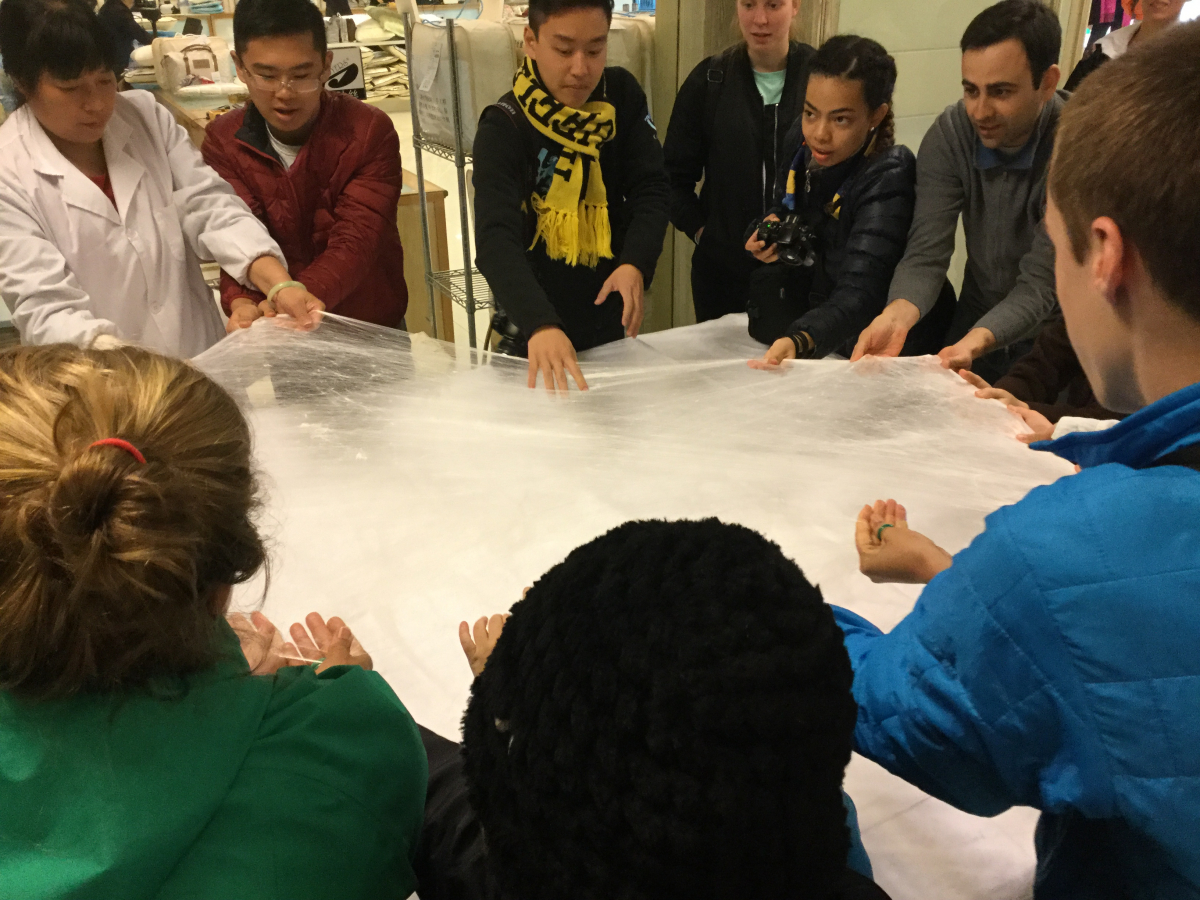
We next visited a silk factory. Suzhou has been the center of the silk industry for thousands of years. Our tour took us from the life cycle of the silk moths to the creation of silk thread and filling. The tour emphasizes the noble character of the catepillers who sacrifice their lives to give us silk! Of course there was a shop full of silk goods at the end of the tour which we enjoyed very much! Our final stop in Suzhou was the Suzhou Museum. Full of important cultural artifacts from across several dynasties, the museum building was designed by famed architect I.M. Pei. Suzhou is his hometown and he loves it so much that he designed the building for practically nothing. I. M. Pei also happens to be the grandfather of MX grad Anna, ’16! It is a beautiful building, full of fascinating items which gave us a glimpse into China’s and Suzhou’s past.
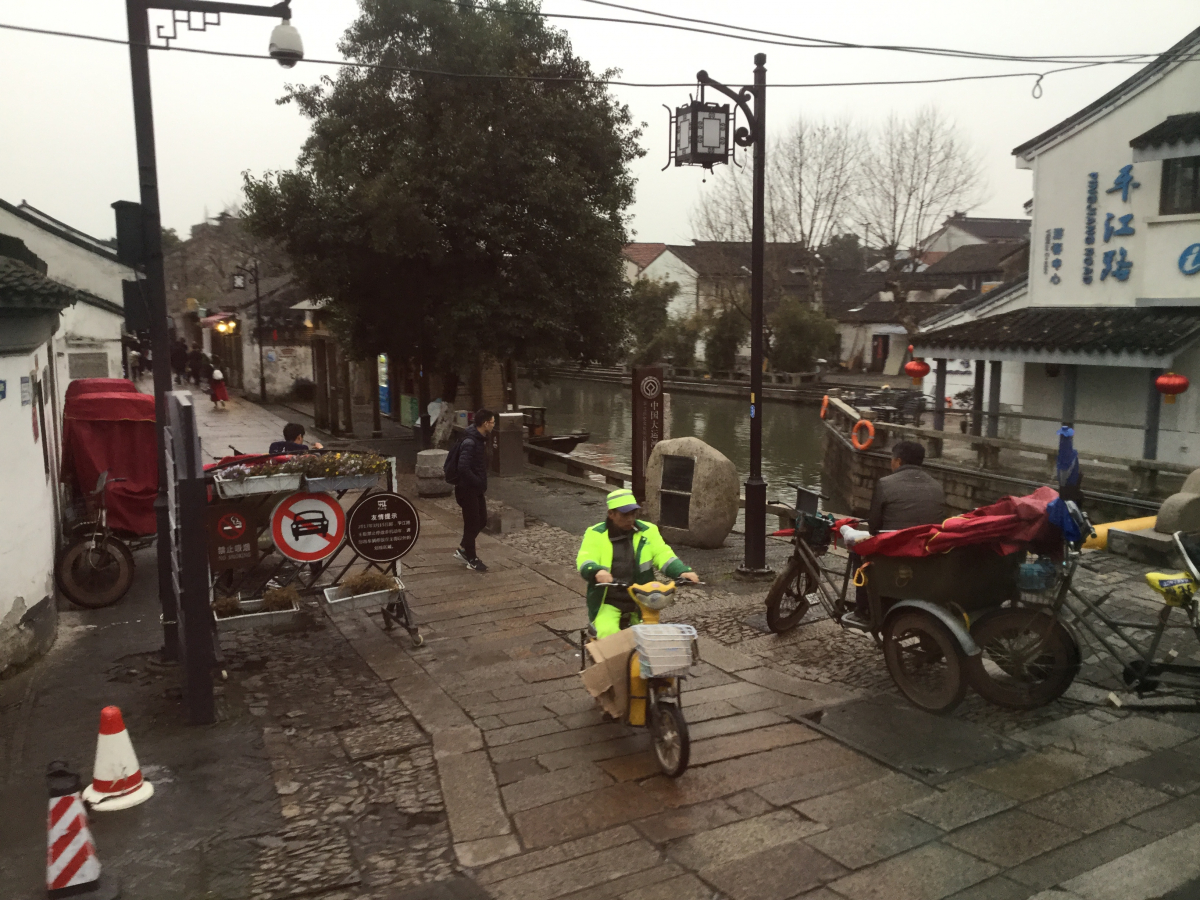
After a full day in Suzhou we had a long drive to our overnight stop – Wuzhen, the “little Venice of China.” The drive gave us the opportunity to see a less urban China, and we shared the road with trucks carrying all manner of goods, including pigs and cows! The area of Wuzhen where we are staying is car-free. It is a re-created riverside town designed to give tourists that old timey China experience. We parked the bus and walked in to a “village” of narrow streets and water ways. Our group had to go through a visitor’s center and take a quick ferry ride to dinner and our sleeping quarters. No big hotels here. Instead, we’re divided up into several quaint guest houses. Tomorrow we’ll take a tour and probably get to go shopping again! Those Yuan won’t spend themselves!
